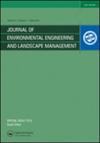城市热环境健康风险评价及弱势人群特征分析
IF 1.1
4区 环境科学与生态学
Q4 ENVIRONMENTAL SCIENCES
Journal of Environmental Engineering and Landscape Management
Pub Date : 2023-01-20
DOI:10.3846/jeelm.2023.17635
引用次数: 0
摘要
持续的全球变暖和频繁的极端高温使城市气候健康风险不断增加,严重威胁着居民的情绪健康。因此,需要对城市热岛效应对情绪健康造成的健康风险的空间分布进行分析,并对弱势人群的特征进行基础研究。本研究以天津市为例,分析了陆地卫星遥感图像、气象站和数字地图的数据,探讨了夏季UHI效应对遇险(一种典型的负面情绪因素)的影响及其时空演变,并对弱势群体的年龄组、性别、家庭状态和遇险水平进行了差异分析。研究结果表明:(1)1992-2020年期间,超高压对居民痛苦的影响程度和面积急剧增加,影响程度从2-4级上升到4-7级,高水平影响区集中在天津市中心的6个区。(2) UHI效应对痛苦的影响在不同年龄组中各不相同——通常随着居民年龄的增长而波动,尤其是50-59岁的居民。(3) 男性在痛苦中经历了W型模式,情绪更加易怒和不稳定;而女性一开始对痛苦更敏感,但随着温度的升高,她们变得更加平静。(4) 对家庭状况的研究表明,共同生活的夫妇在面对热应激时表现出良好的耐热性,而独自生活或有孩子的中老年人在适应高环境温度方面相对较弱。本文章由计算机程序翻译,如有差异,请以英文原文为准。
HEALTH RISK APPRAISAL OF URBAN THERMAL ENVIRONMENT AND CHARACTERISTIC ANALYSIS ON VULNERABLE POPULATIONS
Continuous global warming and frequent extreme high temperatures keep the urban climate health risk increasing, seriously threatening residents’ emotional health. Therefore, analysis on spatial distribution of the health risk that the urban heat island (UHI) effect imposes on emotional health as well as basic research on the characteristics of vulnerable populations need to be conducted. This study, with Tianjin city as the case, analyzed data from Landsat remote-sensing images, meteorological stations, and digital maps, explored the influence of summer UHI effect on distress (a typical negative emotion factor) and its spatiotemporal evolution, and conducted difference analysis on the age groups, genders, family state, and distress levels of vulnerable populations. The results show: (1) During the period of 1992–2020, the level and area of UHI influence on residents’ distress drastically increased–influence level elevated from level 2–4 to level 4–7, and highlevel influence areas were concentrated in six districts of central Tianjin. (2) Influence of the UHI effect on distress varied in different age groups–generally dropping with fluctuations as residents got older, especially residents aged 50–59. (3) Men experienced a W-shaped pattern in distress and were more irritable and unsteady emotionally; while women were more sensitive to distress in the beginning, but they became more placid as temperature got higher. (4) Studies on family status show that couples living together showed sound heat resistance in the face of heat stress, while middle-aged and elderly people living alone or with children were relatively weak in adjusting to high ambient temperature.
求助全文
通过发布文献求助,成功后即可免费获取论文全文。
去求助
来源期刊
CiteScore
1.90
自引率
7.70%
发文量
41
审稿时长
>12 weeks
期刊介绍:
The Journal of Environmental Engineering and Landscape Management publishes original research about the environment with emphasis on sustainability.

 求助内容:
求助内容: 应助结果提醒方式:
应助结果提醒方式:


